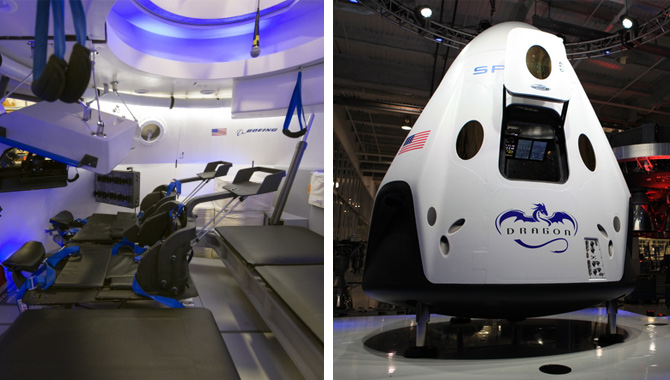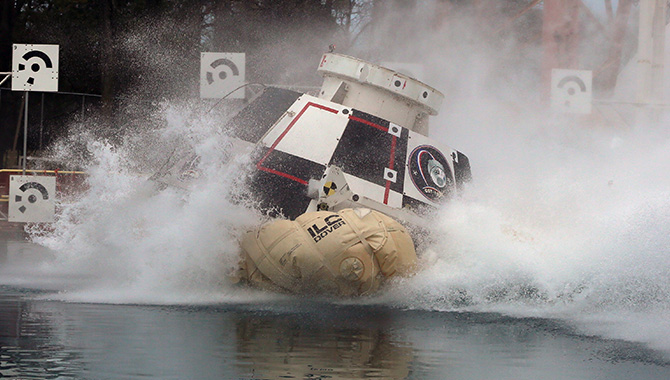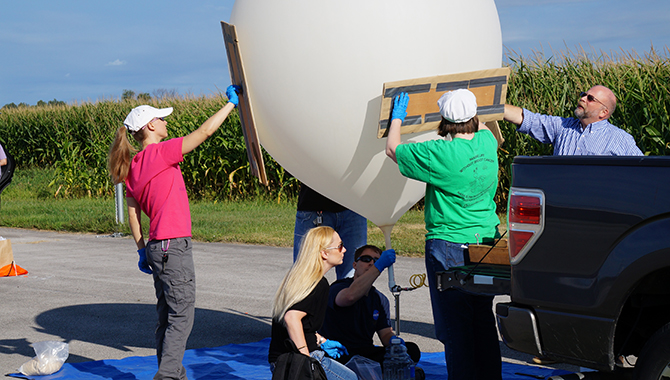
Left Image: Interior of Boeing’s CST-100 spacecraft.
Photo Credit: NASA/Robert Markowitz
Right Image: SpaceX Dragon V2 spacecraft.
Photo Credit: NASA/Dmitri Gerondidakis.
The announcement that NASA will partner with more than one company took some by surprise. But the decision sets up the agency for success beyond low Earth orbit (LEO).
On Tuesday, September 16, 2014, NASA announced it will partner with the Boeing Company (Boeing) and Space Explorations Technologies (SpaceX) to pursue US-based commercial crew transportation to the International Space Station (ISS). Upon learning the news, some expressed surprise that the agency did not simply select one company to develop commercial crew capabilities. According to NASA Administrator Charlie Bolden, the decision to work with two American companies makes complete sense when you consider both short- and long-term agency goals.
“While Boeing and SpaceX handle the task of taking our astronauts to the space station, the scientists on Earth and astronauts on the orbiting ISS National Laboratory will continue the groundbreaking research that has been taking place there for almost 14 years now without interruption. They will be able to add to that portfolio with an expanded crew made possible by the arrival of these new spacecraft.”
But that, Bolden explained, is not the only goal. Having two industry partners focused on LEO transport will free up the agency to target deep space travel to an asteroid and, eventually, Mars. “As research takes place in Earth orbit and the companies refine these new space transportation systems, we at NASA will be working just as diligently readying our new heavy-lift rocket, the Space Launch System (SLS), and our multi-purpose crew vehicle, Orion, for missions in the next decade that will carry people far from our local space neighborhood.”
When asked why more than one company was selected, Bolden said that working with several private industry partners only strengthens the future of space travel. NASA’s sights are set on multiple deep-space destinations, including asteroids, the moon, and Mars. “And to be able to service those additional destinations, we’re going to need as many providers as we can [get]. So our intent is: as long as the providers meet our requirements, we want to use them.”
Astronaut Mike Fincke reinforced the notion that the Commercial Crew Program supports NASA’s ability to conduct future deep-space missions. He emphasized that the commercial crew vehicles will enable more people to be on the ISS performing critical research. “We’re talking about the ability to conduct the full-on studies that we’re counting on to help fill in the gaps about long-duration space flight so we can survive the years-long trip to Mars and back.”
Developing a U.S.-based capability to bring crew and cargo to the ISS serves several purposes. According to Kathy Lueders, manager of NASA’s Commercial Crew Program, “These missions will enable NASA and our international partners to perform more research on the orbiting laboratory, nearly doubling today’s scientific research potential. They also offer the unique capability of serving as a space-station lifeboat for up to 210 days, keeping our crew members safe in the event of an emergency.” In addition, Bolden stated, the capability will end NASA’s reliance on Russia as the sole means of sending crew to the ISS.
Under the contracts, Boeing will receive $4.2 billion to develop their CST-100 spacecraft while SpaceX will get $2.6 billion for their work on the Crew Dragon. In order to fulfill their contracts, each company is responsible for designing, developing, testing, evaluating, and certifying their system. Each must meet five certification milestones: certification baseline review, design certification review, flight test readiness review, operational readiness review, and certification review. Once these requirements have been met, they will conduct a test flight to the ISS with NASA crew onboard. This test must demonstrate their ability to deliver crew and cargo to the ISS, dock successfully, and return the crew safely home. Following certification, each company will conduct two to six ISS missions.
The spacecraft will launch from Kennedy Space Center, with the first flight expected to occur in 2017.









